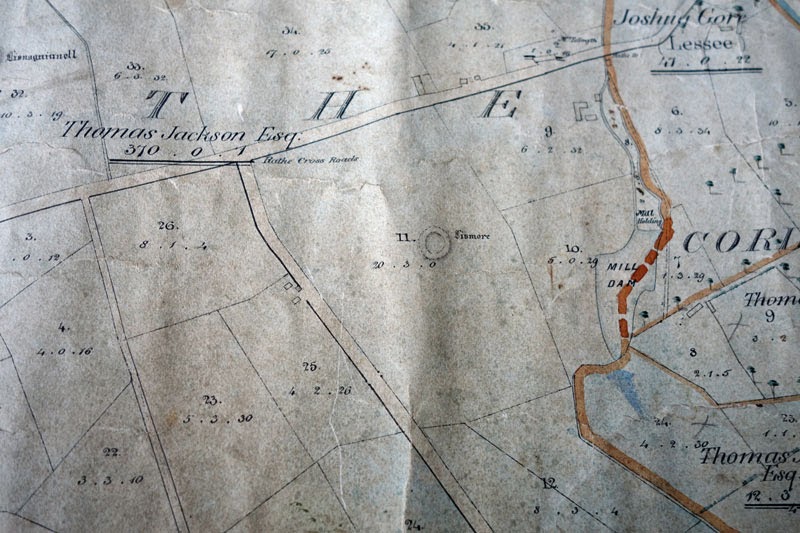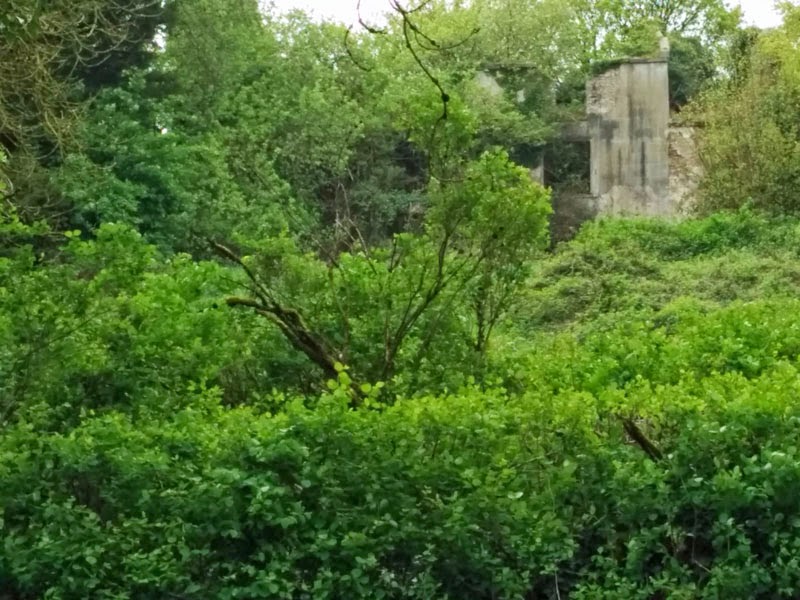 |
| One of these mugs is at my side as I write, but let me back up a bit before I explain why they mean so much to me. |
Oinri Jackson, whom I introduced in my previous post, not
only picked Andreas & me up from Dublin, and drove us the full hour up to
his home at Brittas in Co. Meath, but he also took the time to make several
side jaunts along the way.
One of these side trips was to meet Brian Garvey, a farmer
at Rathe, who owns and runs a sheep farm of some several hundred acres in the Parish
of Nobber. This is a parish in the Barony of Morgallion in Co. Meath. In 1754, the townland of Rathe
had been leased by Henry Jackson of Lisnaboe and his son Thomas Jackson, and was likely owned by the family for several decades before this. These Jacksons are related to the Jacksons of Ballybay in Co. Monaghan, and
are also likely related to another line of Jacksons who lived at Ballyreagan, Co. Down.
SEE:
Jacksons
of Lisnaboe.
 |
| Rathe House: I do not have a construction date for the house as yet. |
 |
| Brian is a full time farmer tending to hundreds of acres
grazed by his flocks of sheep. I would have loved to have had more time to hear his stories. |
 |
| It is hard to see much detail in a thumbnail such as this,
but it does show the scope of the map. |
As you can see, the map is dated 1856 and is enlarged from the Griffiths
Survey. Maps connected to Griffiths can be found on line at
Ask About
Ireland. The part that Jacksons leased at Rathe belonged to
Sir William
Verner. Knowing the name of the landlord helps in searches at the Deeds Registry since the Memorials of the Deeds are indexed by lessor, not lessee. During the potato famine, Verner offered work to any of his tenants
in need and also reduced rents by as much as half. This had the knock-on effect
of reducing turnover, which means that next on my to-do list is to explore the
rental records of the Verner Estate to see what I can learn about any stray
Jacksons.
Three things caught my eye when I studied this map.
 |
| Firstly the siting of the mill dam and mill holding - just to the left of the red line. This is
of interest because the Jacksons of Rathe, as well as the Jacksons of Ballybay
and elsewhere, were involved in both the milling trade and the linen industry. |
In this section of the map as well as the next one, what
caught my eye were the names of neighbours. They are the same names that we see
as neighbours of the Jacksons of Creggan, South Armagh. The Jacksons of Creggan
are - based on oral history - related to the Ballybay & Co. Down Jacksons.
I would love to know who Mrs Elizabeth Smythe was. It may shed light on this issue, since
the Smythes were also connected to land in Creggan.
 |
| Corrs and Allens were also lessees in Creggan parish, and they lived there as well. |
 |
| Thomas Jackson jr leased Ballynalurgen. He was a son of
Thomas JACKSON and Anne GORDON. He died Mar 6, 1877. |
 |
| The courtyard of Rathe as it is today. The location of the house and farm buildings can be seen in
the map detailing the mill dam –they are sited above the mill.
|
 |
| An old stone by the house with the dates 1794, with the “4”
curiously inverted, as well as the dates 1795 and possibly 1767. What they
mean, I have no clue. |
As for the cups at the start of this blog, they were an unexpected gift
from Brian Garvey. We were just heading out, when he insisted that we should
have something to take home with us. A memory. The swirly things
he said as he reached into his china cabinet, they are very old here… made by a local potter.
In Irish folklore, the three connected spirals represent the intertwined powers
of maiden, mother and crone, a convergence of powers which is most likely to be
realized at a time of transition and growth. With all the ancient raths resulting in this
townland being named Rathe, Brian could not
have handed us a more appropriate gift. A bit of local magic. It is also a fitting symbol for me to reflect
on as I write. Always.
POSTSCRIPT: I have just posted some data that might help flesh out the family trees of the
JACKSONs of Rathe. Help on this would be more than welcome.













No comments:
Post a Comment